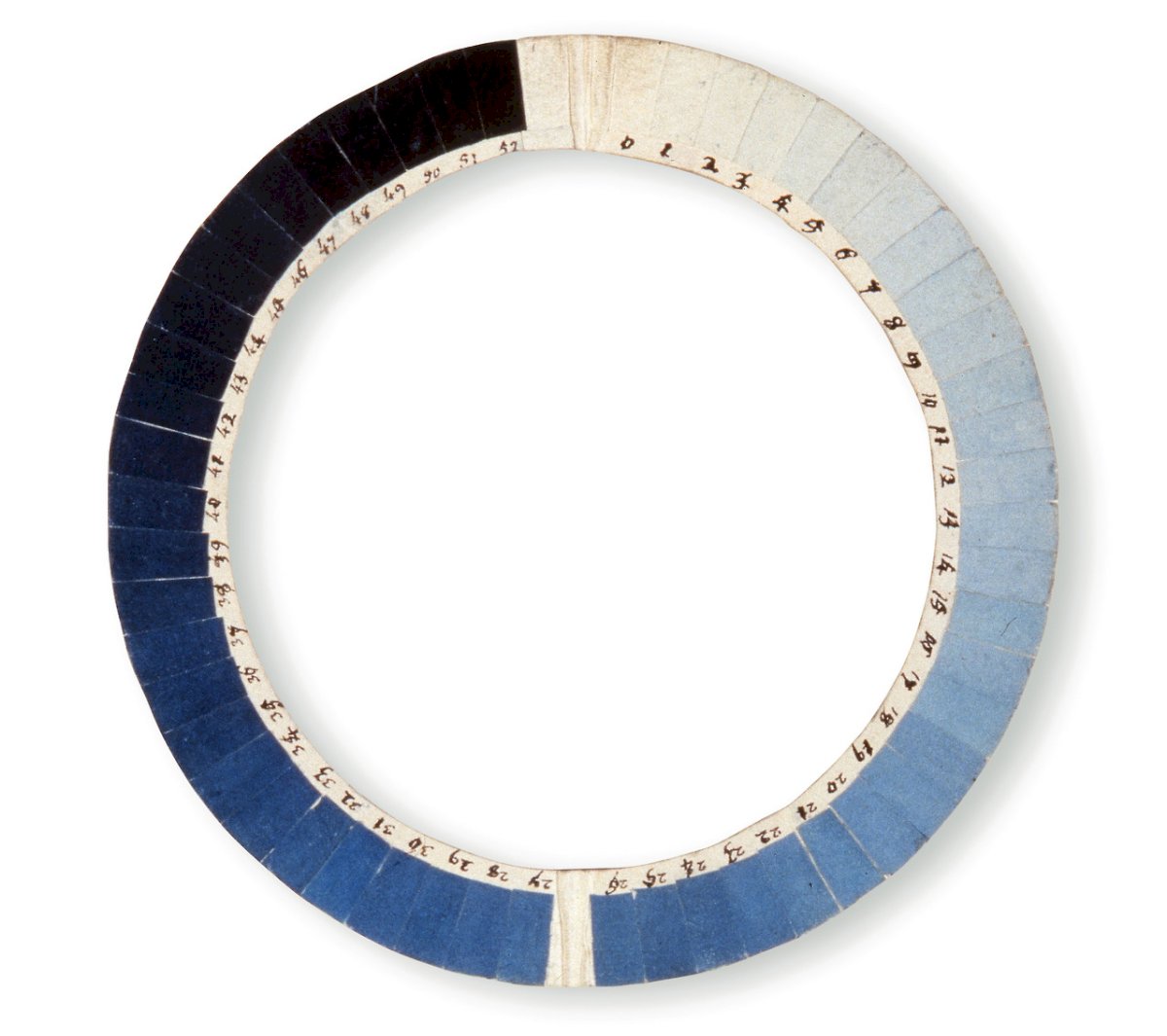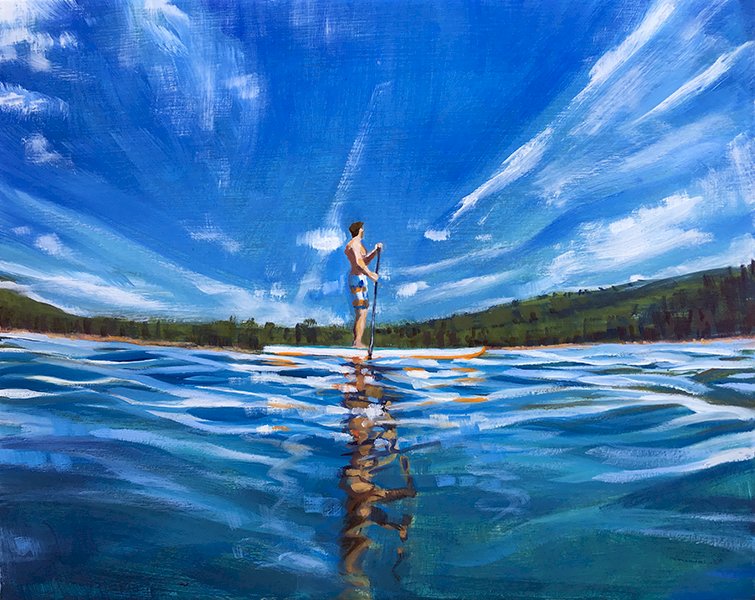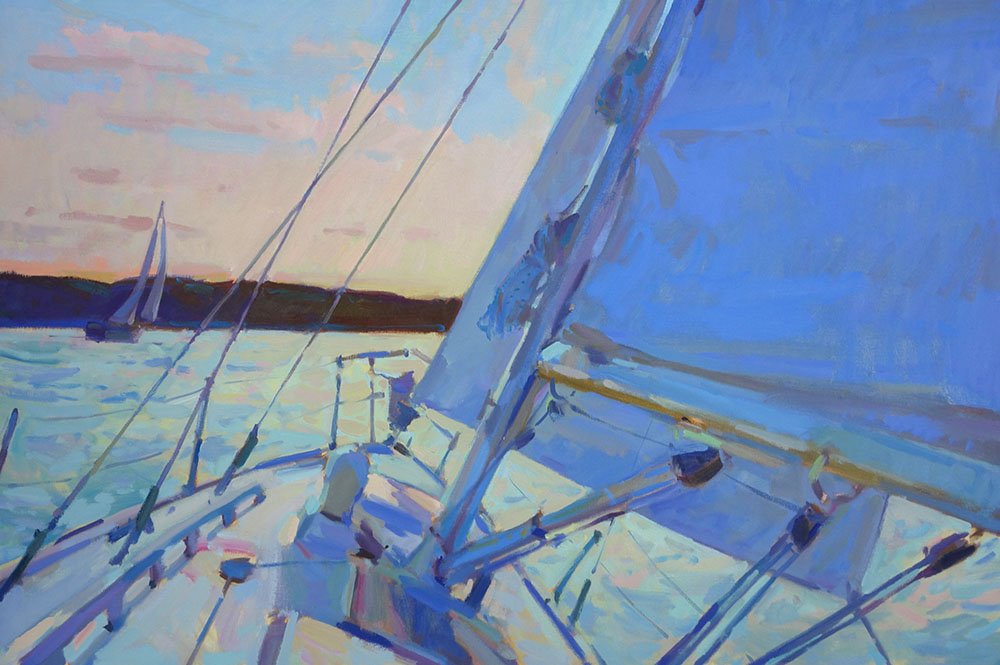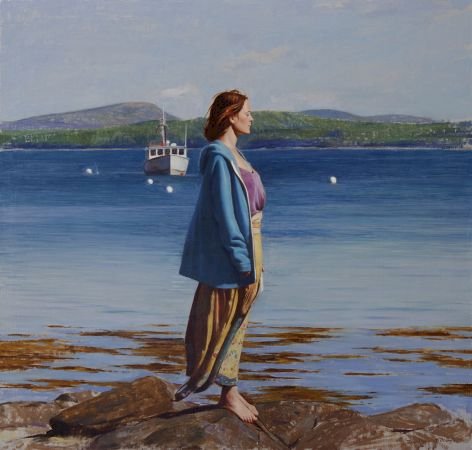Blue Sky Blue Sea
April 8, 2020
Let the blue sky meet the blue sea and all is blue for a time. -Moncy Barbour
 [source: http://institutions.ville-geneve.ch/fr/bge/]
[source: http://institutions.ville-geneve.ch/fr/bge/]
The Cyanometer is used to measure the blueness of the sky, and was shown to us by Jessica Lee Ives in her Color Workshop last fall.
Anyone who has tried to paint the sky knows there is no such color as sky blue. Depending on the time of day, the type of day, and which part of the sky you are looking at, there are a wide range of blues (and other colors) that can be seen. Often the sky becomes a bit pinker or greener near the horizon, depending on atmosphere and light. The blue sky on a clear day is deepest in color directly overhead. Atmosphere reflects and refracts, changing the way sky color is observed.
Living in a coastal town, the comparison of the sky and sea is ever present. The color relationship is perpetually changing, each reacting to the other, to the changing angle of the sun, the presence of clouds, rain, snowfall, to the waves in the wind and the droplets in the atmosphere. There are endless greys, pinks, teals, browns and greens. When a clear blue sky and a deep blue sea meet, there is cheer and comfort to the day. Those bright blues signify a sunny day that lifts us up.
The cyanometer, a tool from 1760 is used to measure the blueness of the sky, is a scientific way to compare how clear the air is with a simple color observation. Through the color of the sky we can observe weather, pollution and atmospheric conditions. It’s proof that an artist’s obsession with color perception is more than just a whim, but is vital to more fully understanding the world we inhabit.
Shareable link to this blog entry:
http://www.thepagegallery.com/blog/blue-sky-blue-sea


